The history of implantable technology. Limb prostheses
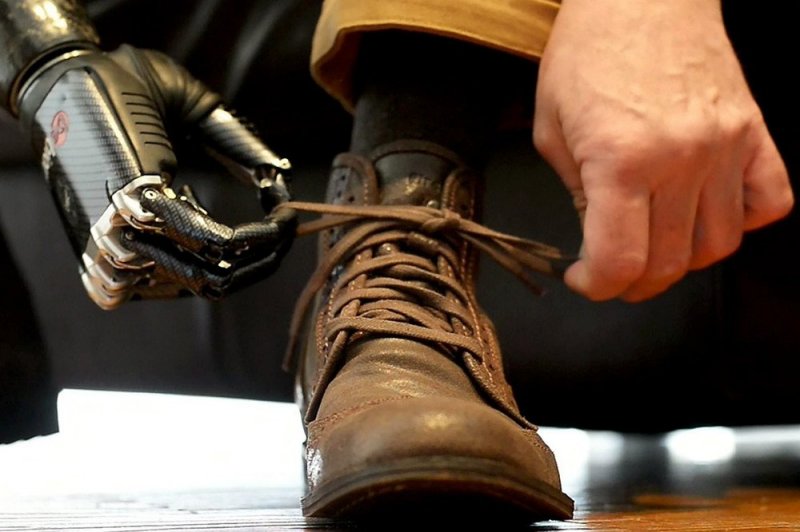
The evolution of prosthetics is a long and legendary history: from primitive sources to complex modern structures. As in the development of any other field, some ideas and inventions worked and successfully developed, while others remained on the sidelines of history and became outdated.
The long and winding path to computerized prostheses began around 1500 BC. In order to assess how far mankind has gone in the field of prosthetics, first we should look at the experience of the ancient Egyptians.
')
The Egyptians were the pioneers of orthopedic technology. Their “rudimentary” prostheses were made of cloth, and it is believed that they were worn more for the feeling of “wholeness” than for their prosthetic functions. The first functional prosthesis of the big toe, belonging to a person of a noble family, was found in Egypt. According to scientists, it was created in the period 950-710. BC. The prosthesis consisted of two wooden parts, which were fastened with leather thread through the holes drilled in the wood. A leather strap fastened a finger to the foot with leather straps.
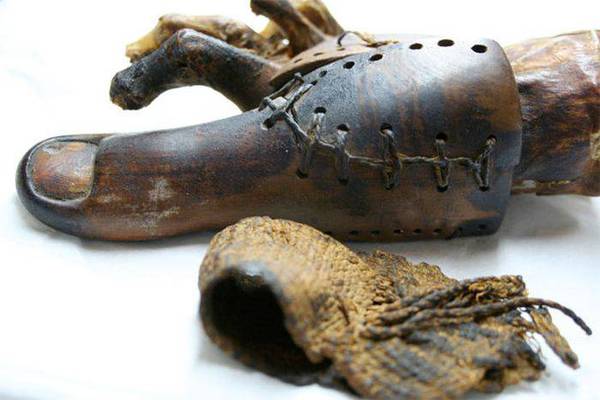
It is difficult to overestimate the importance of fingers in a person’s life, but it is noteworthy that the first real example of prosthetics applies specifically to them, and not to those parts of the body or limbs that may seem more important - for example, hands or feet. There is an assumption that the creation of such a prosthesis Egyptians forced the importance of traditional Egyptian sandals in the wardrobe of a noble woman who could not be worn without a thumb.
This attention to the aesthetic appeal of prostheses is quite common among ancient devices and may even be more important than their functionality.
424 BC - 1 BC
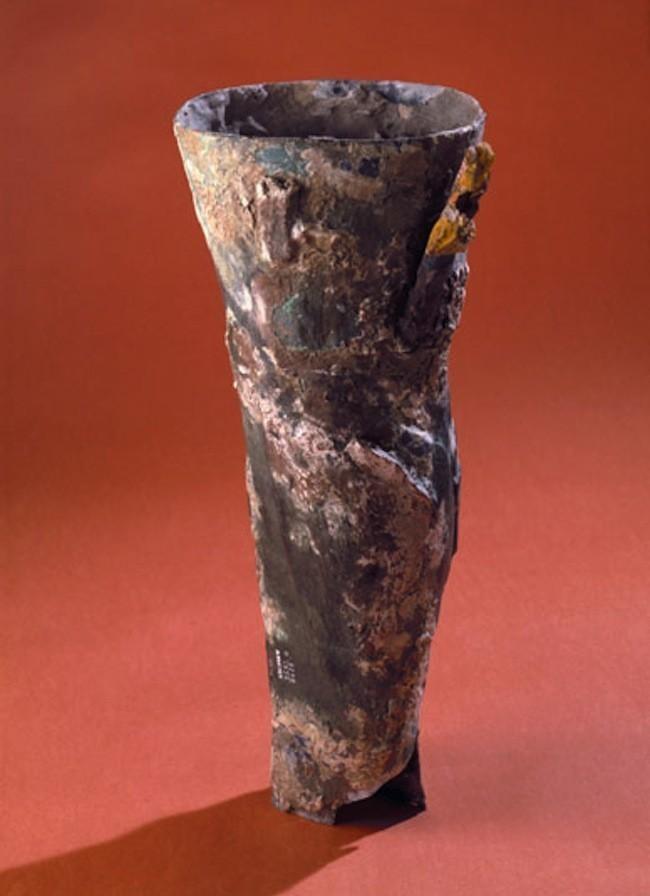
As a result of excavations in 1858, the first artificial leg was found in the Italian city of Kapuya, which was made around 300 BC. It is made of bronze and iron, with a wooden core, which, apparently, was worn below the knee. There is an exact copy of this prosthesis, which can be seen in the Museum of Science in London.
The most famous case in ancient Roman history of prosthetics is described by the Roman scientist Pliny the Elder, and is associated with General Mark Sergius, who is considered the first documented carrier of an artificial limb. In the second Punic War, Sergius lost his right arm and received a prosthesis made of iron, so that he could hold his shield and continue the battle.
The history of ancient Greece also contains information about successful prosthetics. In 424 BC The ancient Greek historian Herodotus wrote about a Persian visionary who was sentenced to death, but he had amputated his leg and made a wooden prosthesis to walk almost 50 kilometers to the next city and thus escape from persecution.
Dark Ages (476-1000)
During this period, mankind has advanced in prosthetics and created more complex devices than a hand hook or a wooden leg. Most dentures at that time performed a more aesthetic function and were made in order to hide the deformities or injuries sustained in battle. The knights had dentures for their arms, which allowed them to hold the shield for their legs so that they could be fixed in the stirrup, with little attention to functionality. At that time, only very rich people could afford to wear dentures outside the battle.
In the dark ages, merchants and gunsmiths were mainly engaged in designing and creating artificial limbs. But besides them, people from other professions contributed to the development of prosthetics. So, for example, watchmakers were especially useful for adding complex internal functions with springs and gears.
The Age of the Renaissance (1400-1800)
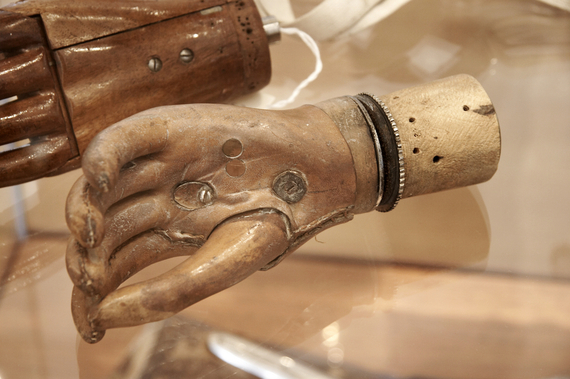
The epoch of rebirth opened up new perspectives for art, philosophy, science and medicine. At this time, there was a revival in the history of dental prosthetics: they were made mainly of iron, steel, copper and wood.
Early 1500s
The history of prosthetics is always intertwined with the history of wars and the lives of soldiers who are fighting. Examples from the Middle Ages show how slowly this area developed — the iron hands that were made for knights were no more advanced than those used by General Sergiy a thousand years ago.

In 1508, the German mercenary Goetz von Berlichingen had a pair of technologically advanced iron hands, made after he lost his right arm in the Battle of Landshut. They could be controlled by springs suspended on leather straps.
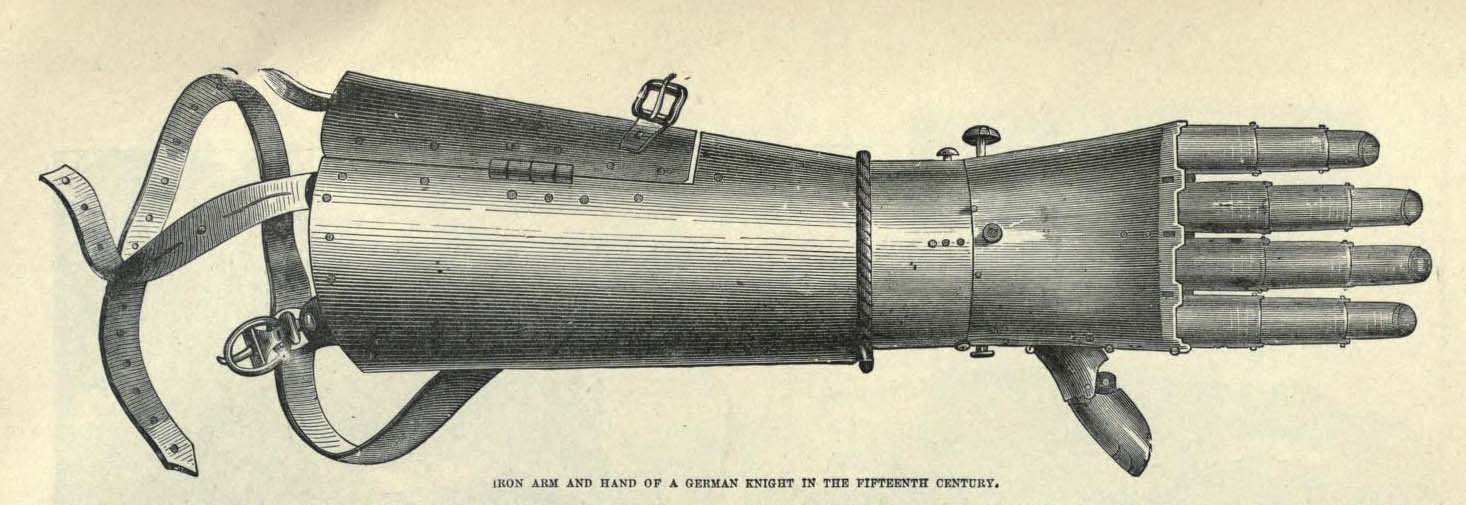
Around 1512, an Italian surgeon, traveling across Asia, drew attention to a man with bilateral arm amputation, who could take off his hat, open his wallet and sign his name with a prosthesis. Another story of that time is associated with a silver hand that was made for the Turkish admiral Hayreddin Barbarossa, who fought with the Spaniards in Bouzi.
From the middle to the end of the 1500s
The French army barber Ambroise Pare, according to many scholars, is the father of modern amputation and orthopedic surgery. In 1529 he introduced modern amputation procedures in the medical community, and in 1536 made hinged prostheses for the upper and lower limbs. He also modified the artificial leg below the knee, adding to it adjustable seat belts, knee lock control and other technical features that are used in modern devices.
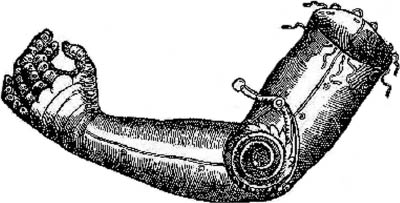
His work demonstrated the first true understanding of how the prosthesis should work. Colleague Pare - Lorrain, a French mechanic, made one of the most important contributions in this area, using leather, paper and glue instead of heavy iron in the manufacture of the prosthesis.
Much of Pare's work canceled many of the widespread medical beliefs of the time, some of which did more harm than good. For example, Paré found that if you apply oil to the place of a gunshot wound or any other wound, it does not lead to healing, as previously thought, but in fact has a negative effect. The same applies to cauterization - another common method that seemed to Pare ineffective. Instead, Paré used the artery dressing, and became, perhaps, the first doctor who performed this operation.
XVII-XIX centuries.
In 1696, Peter Verdine developed the first prosthetic leg below the knee without additional fixation, which later became the basis for modern prosthetics of joints and corsetry devices.
In 1800, Londoner James Potts developed a prosthesis made from a wooden rod with a steel knee joint and a hinged leg, which was fastened with catgut threads from knee to ankle. Subsequently, this prosthesis will be called the “Anglesey leg” in honor of Henry William Paget - the first man to be awarded the title of Marquis of Anglesey, who lost a leg in the Battle of Waterloo and took advantage of Potts’s invention. In 1839, William Selfo brought this prosthesis to the United States, where he became known as the “Foot Self”.
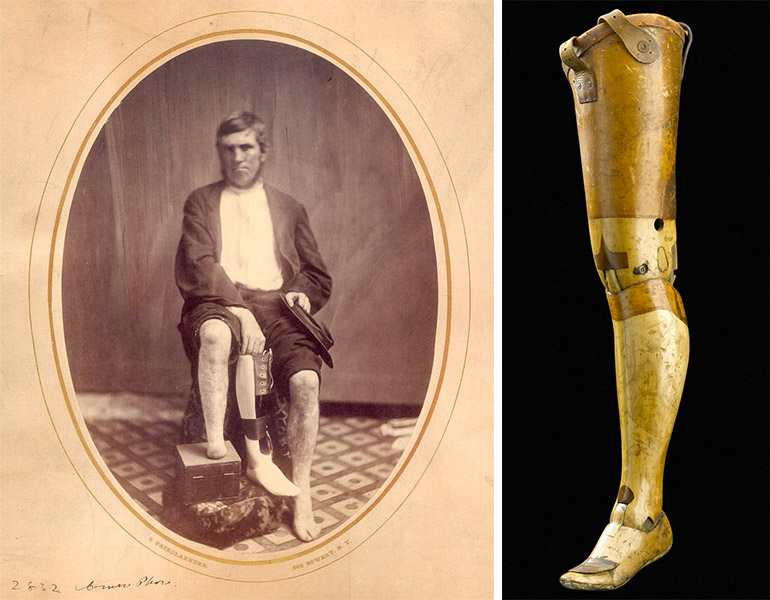
In 1843, Sir James Syme discovered a new method for amputation of the ankle, which did not lead to amputation up to the thigh. This approach was welcomed in the community of amputees with disabilities, because it meant that it was not possible to walk with a prosthesis that replaces the entire leg, but only with an artificial foot.
In 1846, Benjamin Palmer decided to improve the situation for patients with an amputation of the lower extremities and refined "Self's leg" by adding a front spring, smoothing the appearance and covering the tendons to imitate natural movements.
Douglas Bligh invented and patented the "anatomical leg of Dr. Bligh" in 1858, which he called "the most complete and successful invention ever created among artificial limbs." And already in 1863, Dubois Parmley invented an improved prosthesis with a suction cup, polycentric knee, and many hinges.
Later, Gustav Herman suggested using aluminum instead of steel to make dentures lighter and more functional. Such a light device had to wait until 1912, when Marcel Desutter, a famous English pilot who had lost a leg in a plane crash, did not make the first aluminum prosthesis with the help of his brother, engineer Charles.
The progress that has been achieved in the development of prosthetic technology for 300 years has been insignificant. However, advances in surgery and amputation in the middle of the XIX century allowed doctors to form a stump so that it was more susceptible to the attachment of the prosthesis. Dentures have not improved much, but life has become increasingly convenient for those who wore them.
Transition to the present
As the civil war in the United States continued, the number of amputations grew catastrophically fast, which forced the Americans to develop intensively in the field of prosthetics. James Hanger, one of the first amputees of the civil war, developed what he later patented as Hanger Limb, a prosthesis made from barrel staves and metal that had hinged joints in the knee and ankle area. Hanger Limb was at that time the most advanced technology in the history of prosthetics, and the company founded by Hanger continues to be the leader in this field.
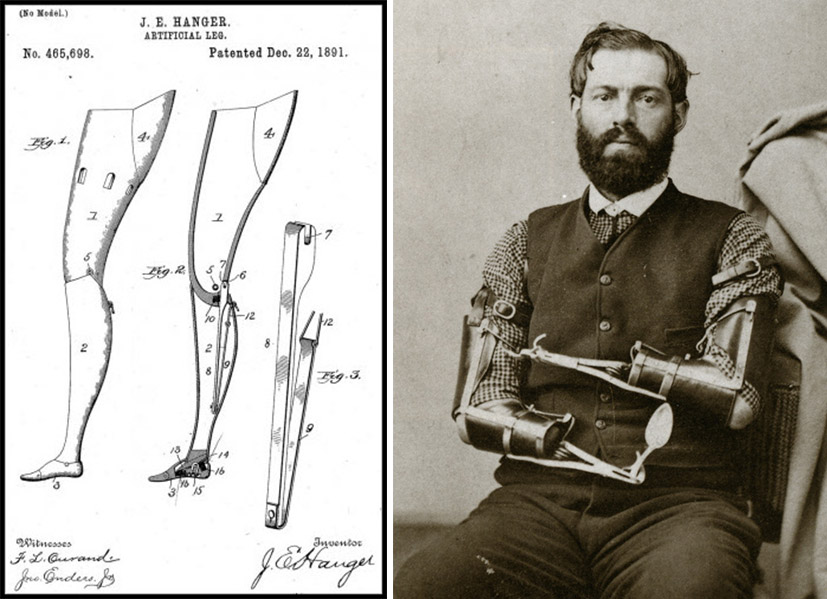
Unlike civil war, World War I did not contribute to particular progress in this area. Despite the lack of technical advances, surgeons and military realized the importance of discussing technology and the development of prostheses. Ultimately, this led to the formation of the American Association of Prosthetics and the use of orthopedic products (AOPA).

After World War II, veterans were unhappy with the lack of technological solutions and demanded improvement. Then the US government made a deal with military companies to improve prostheses, not weapons. This agreement opened the way to the development and production of modern prostheses. New devices are much easier - they are made of plastic, aluminum and composite materials to provide patients with the most functional devices.
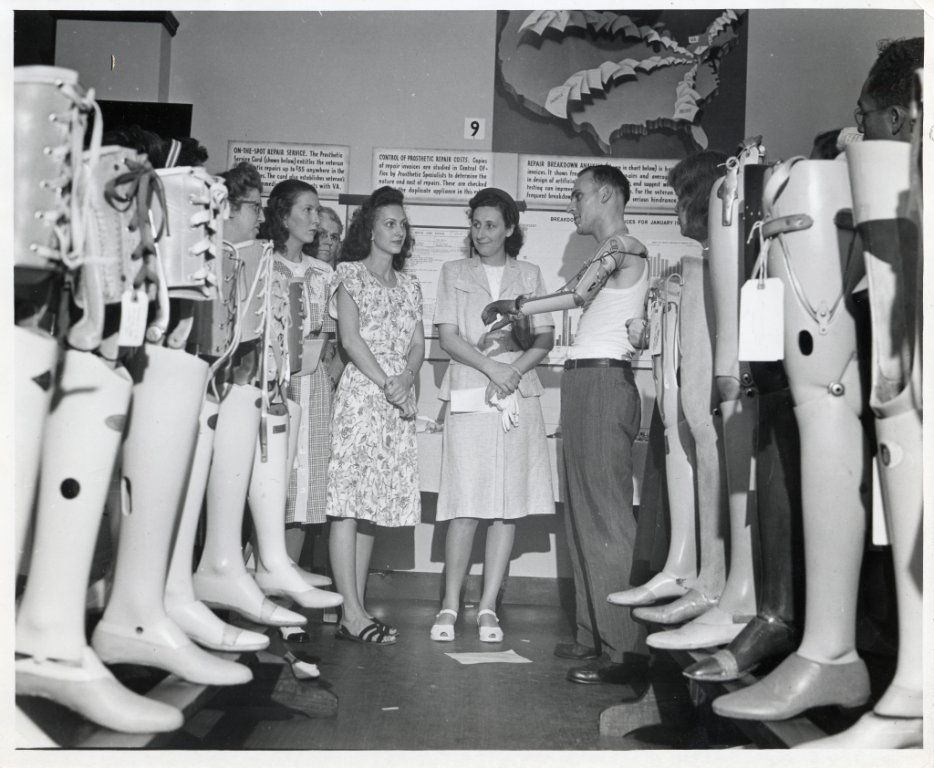
In the 1970s, the inventor Isidro M. Martinez had a great influence on the prosthetics industry when he developed a prosthesis that, instead of trying to repeat the movements of a natural limb, was aimed at improving gait and reducing friction. By reducing pressure and making walking more comfortable, Martinez, who was himself disabled, improved the lives of many future patients.
The most dramatic difference between modern artificial limbs and those that were made in the past is on the border between the prosthesis and the part of the body to which it will be attached. In the past, the suspension system for limb prostheses was made of leather or woven belts, and the groove was wood or metal, lined with a cloth. Most modern prostheses combine a plastic socket and suction cups. They are carefully insulated and prevent damage to the part of the limb to which it is attached.
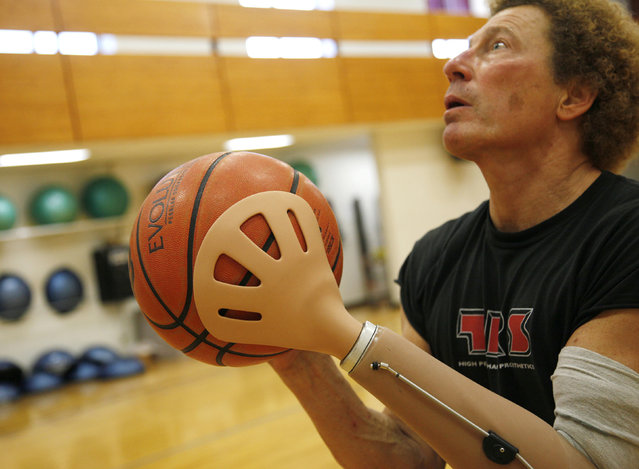
Modern connectors also make it easier to put on and take off the prosthesis. This is especially useful when a person wears several dentures. For example, athletes may have several prostheses for running, skiing, cycling, and other physical activities. Most often, they are not visually similar to human limbs. It is an elaborate plastic, rubber and carbon fiber construction that is proportionally adapted to the body. They are carefully monitored and checked during competition to ensure that no additional benefits are used, such as a longer limb.
In addition to lighter devices, the emergence of microprocessors, computer chips and robotics in modern devices is designed to bring patients to life, rather than simply providing basic functionality or a more attractive look. Modern prostheses can mimic the function of a lost limb more accurately than ever before.
Source: https://habr.com/ru/post/400695/
All Articles